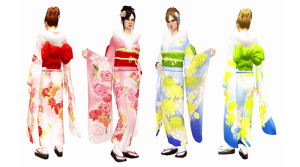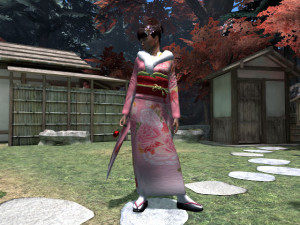Behind the Camera 2: A Kotobuki Story
by Jin Lovelace, HSM team writer & filmmaker
There have been times when I would linger around a personal space and someone would recognize my club label displayed above my head, with inquiries if I’m “THE” Jin Lovelace (whatever that means), or if I’m still producing fashion videos. After my introduction, I’m then met with a hearty dose of compliments on how my filmmaking and contributions to the fashion community are a breath of fresh air in creativity. Then there’s other media networks such as Facebook and Twitter where I’m met with praise for my work. It takes a minute for me to have that sort of thing to sink in, because I’m not the narcissistic type; I’m still learning the ropes, after all.
Sure, I get warm fuzzy feelings when I’m met with the exact same praise by developers who chime in on how much they enjoy my machinima, even when they’re not tagged on social media. But it’s a strange thing when one particular video receives some tremendous amounts of attention behind my back, particularly when that video is drenched in SD-quality goodness because HD PVR wasn’t in my budget at the time — and yet still compelled to tell a story about how a certain celebratory item inspired the inner-essence of the clothing and the virtual being that you see as my profile picture.
Not many would know the history about these gowns, as they are a stray away from the traditional garb; the furisode (swinging sleeves) were worn not just for celebratory occasions — for instance, to bring in a new year — but are known for coming-of-age ceremonies and unmarried female relatives at weddings and wedding receptions.
Aside from the bit of knowledge about the fashion, I’ve yet to own a traditional kimono (expect to shell out, roughly, the price of a car on these due to certain creative material used, as the fabric, dye, and labor aren’t cheap; even when machine operated, the kimonos also require hand-made stitching). Aside from the obvious lack of availability around these parts, I’ve always had a complete fascination for them alongside the Chinese cheongsam dresses (or commonly known as the Mandarin gowns). Every pattern, motif, design and colors on a kimono gave a historic story behind them, and before I know it, I began to whip out my Observer and coordinate a fashion shoot.
My problem, however, from the start of the project was the location. I just didn’t want to create a pure fashion shoot mostly at the Great Edo of Nippon because I felt it would appear to be the typical fan-service of every single picture you’ve viewed from others. Though I enjoy the space itself, it was a bit too cliche for what I wished to accomplish.
Why not the Japanese Apartment? Well, it goes back to the issue of creating a story; again, the goal is to be unique and not purvey some trendy element which would be inaccurate.
Then I thought of the new Tea House that released at the time. Initially I was not impressed, due to the small setting and the space’s purpose, but I also lacked knowledge of its history and the nature behind the abode. However, I felt the need to paint this picture of my perspective on the aesthetics of the kimonos, so I went on and purchased the space. After spending time with the features and gawking over the compact yet colorful wonders, I unconsciously began to start filming certain areas of the space.
One camera angle after another, I continued on shooting and filming, even while changing the diurnal settings of the space. Before I knew it, I was finished with the project and proceeded to start editing, which roughly took thirty minutes or so to complete. I wanted to match a sense of opulence in the video with relaxing music to compliment the nature of the space and the kimonos combined. I didn’t just want to sell these gowns — my goal was to create an authentic presentation that shows my love for the culture and to extend my appreciation to not just the developer, but the history behind the items. Further reading available here.
Home machinima is never an easy thing to pull off, but the feedback received so far suggests this particular video touched people. Which, as a filmmaker, is ultimately all I can hope for.
Share
| Tweet |





 Twitter
Twitter